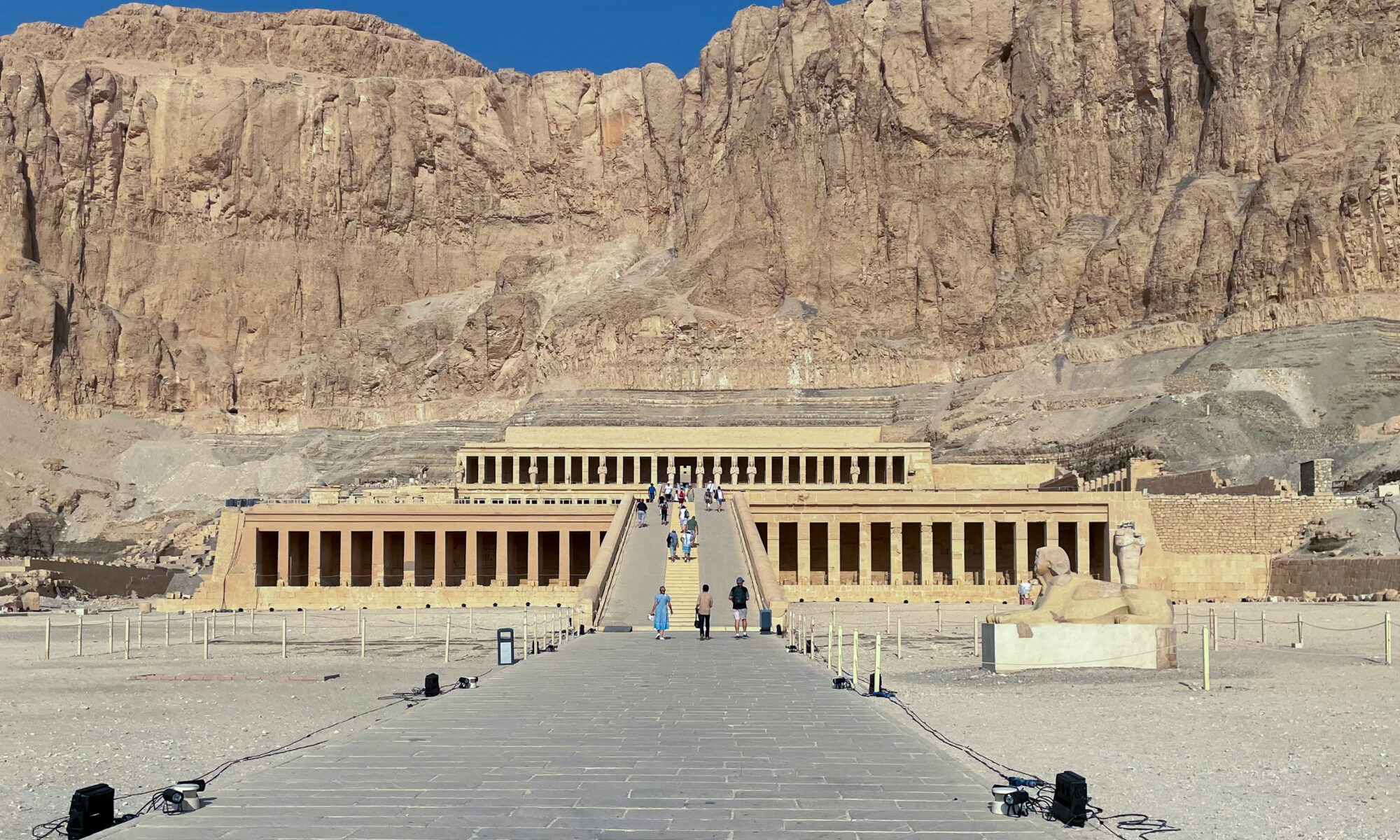Our first stop on our tour of the West bank of Luxor was Djeser Djeseru – the Temple of Hatshepsut – an architectural marvel of ancient Egypt.
The Mortuary Temple of Hatshepsut is dedicated to Amun, the patron deity of Thebes (modern day Luxor), and Hatshepsut, one of the most successful pharaohs and the second ever female pharaohs (but regarded as the first true female pharaoh). The temple was not used as a burial place for Hatshepsut, but instead used to celebrate her life and perform religious ceremonies. Hatshepsut is believed to have been buried in the Valley of the Kings. Much of the temple was destroyed or defaced by her stepson, Thutmose III, but the the temple is currently being actively restored.
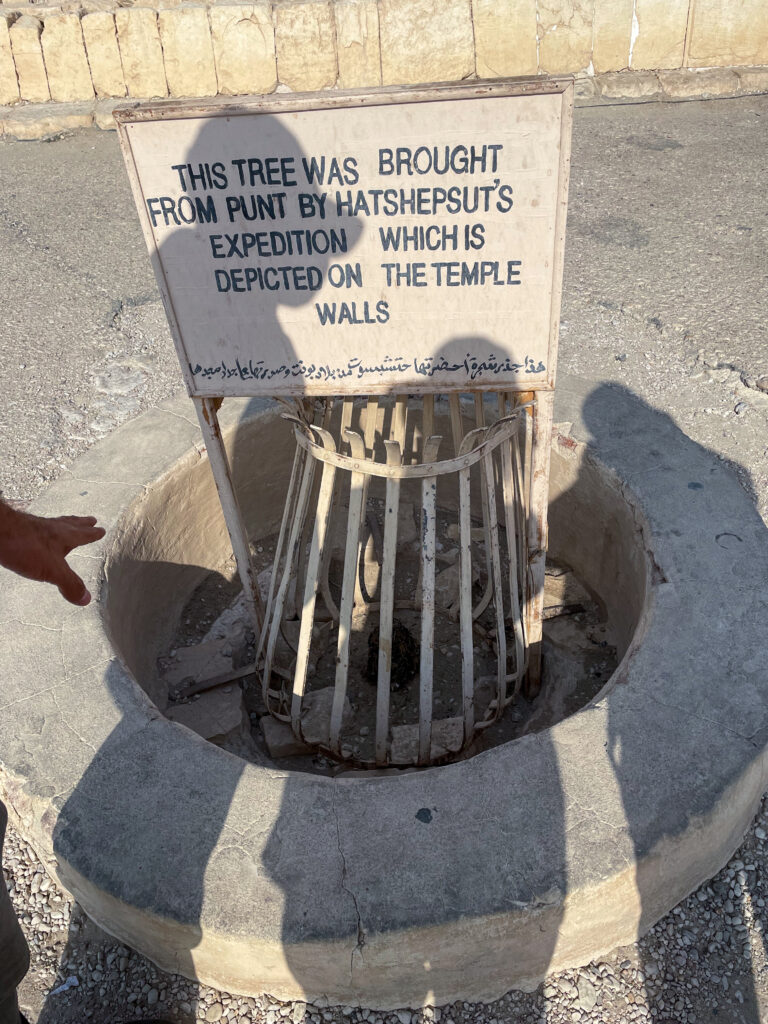
Looking at the temple makes you feel that you are at a classical site in maybe Rome or Greece as opposed to ancient Egypt, which really sets it apart from many of the other sites. The temple faces Karnak where both of Hatshepsut’s obelisks (when still standing) would be visible from across the Nile. In the very front are a line of remains of the original trees Hatshepsut brought back from her expedition to Punt.
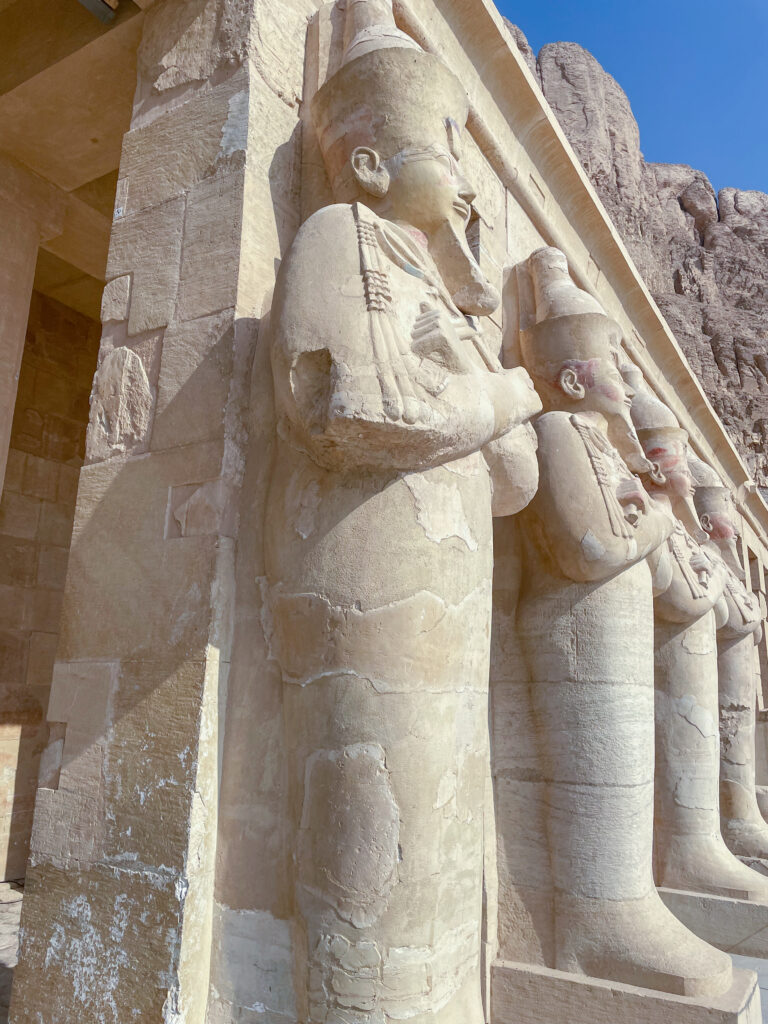
The top terrace is dominated by 26 columns which, before the destruction from Thutmose III, would have had a statue of Hatshepsut in front of each. Some of the statues still have the original color, and all depict Hatshepsut with the false beard of a man.
Amun Shrine
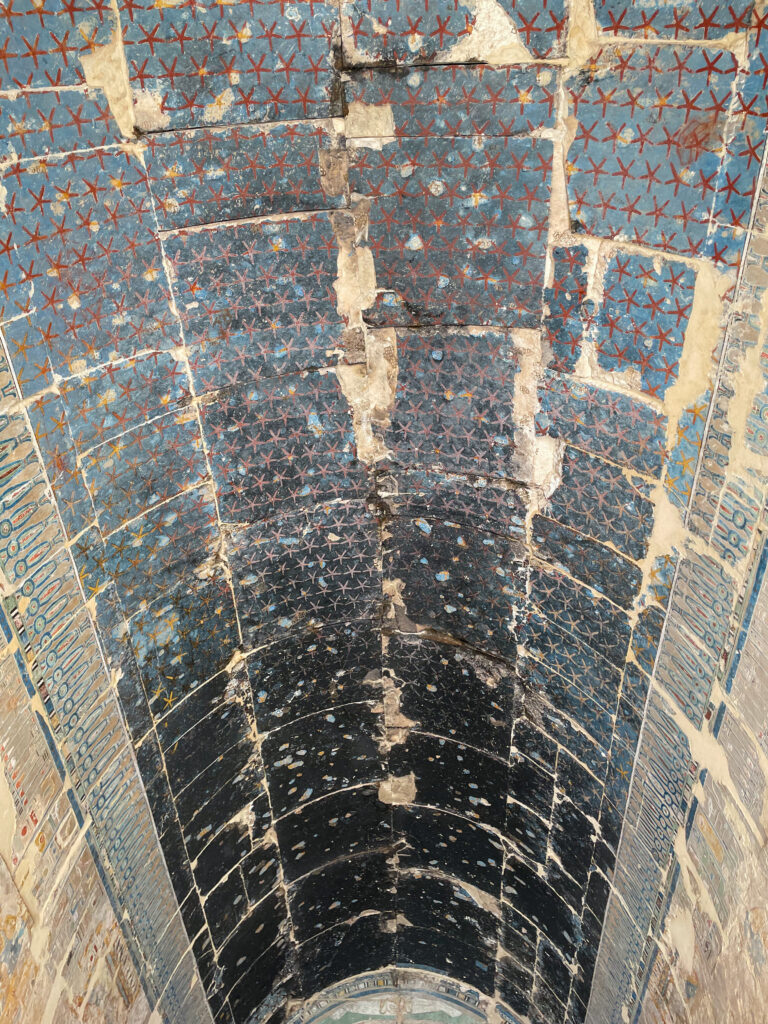
At the very back of the Temple of Hatshepsut is the shrine to Amun. Amun was important here for two reasons – one, he was the patron deity of Thebes (Luxor) and two, Hatshepsut claimed she was the offspring of Amun which made her claim to the throne stronger. Much of the color inside the shrine remains, and the ceiling was beautiful (as they tend to be in Egypt). I loved how the sky depicted on the ceiling fades from dusk to night. There was also a skylight cut into the wall that allowed the sun to illuminate the shrine inside.
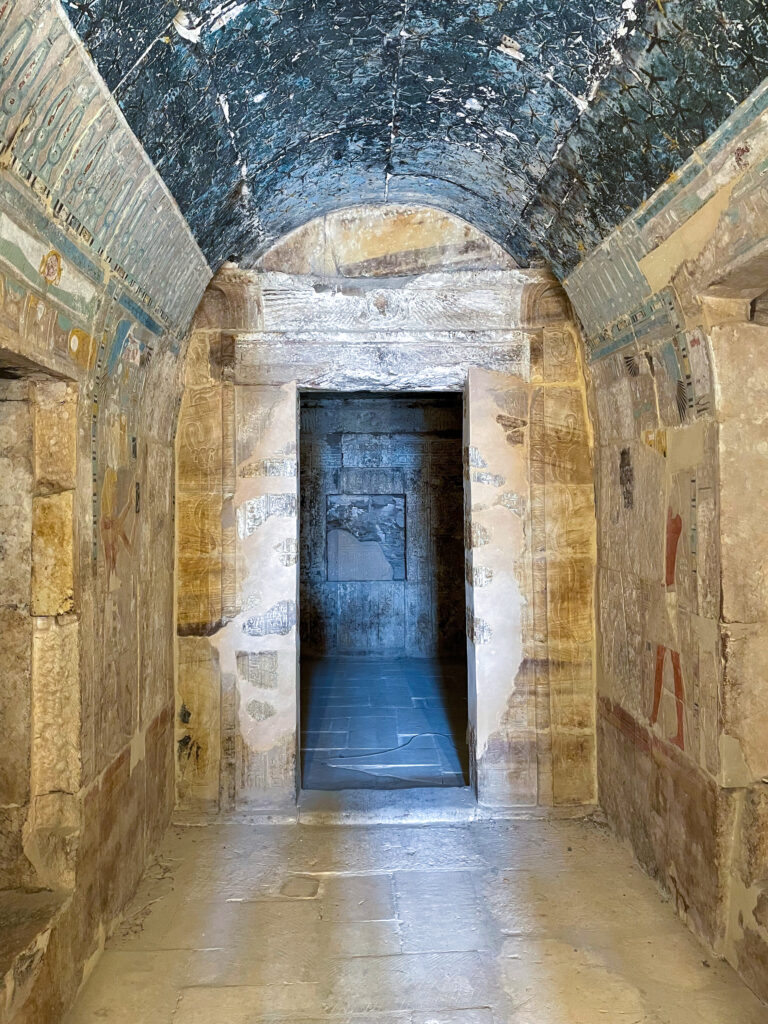
The Mortuary Temple of Hatshepsut was a must for me as a fan of the story of Hatshepsut. It was amazing to see the stories of her reign depicted on the walls, and to see the temple being reconstructed after all these years, even after the attempt of her stepson to remove her from history.

